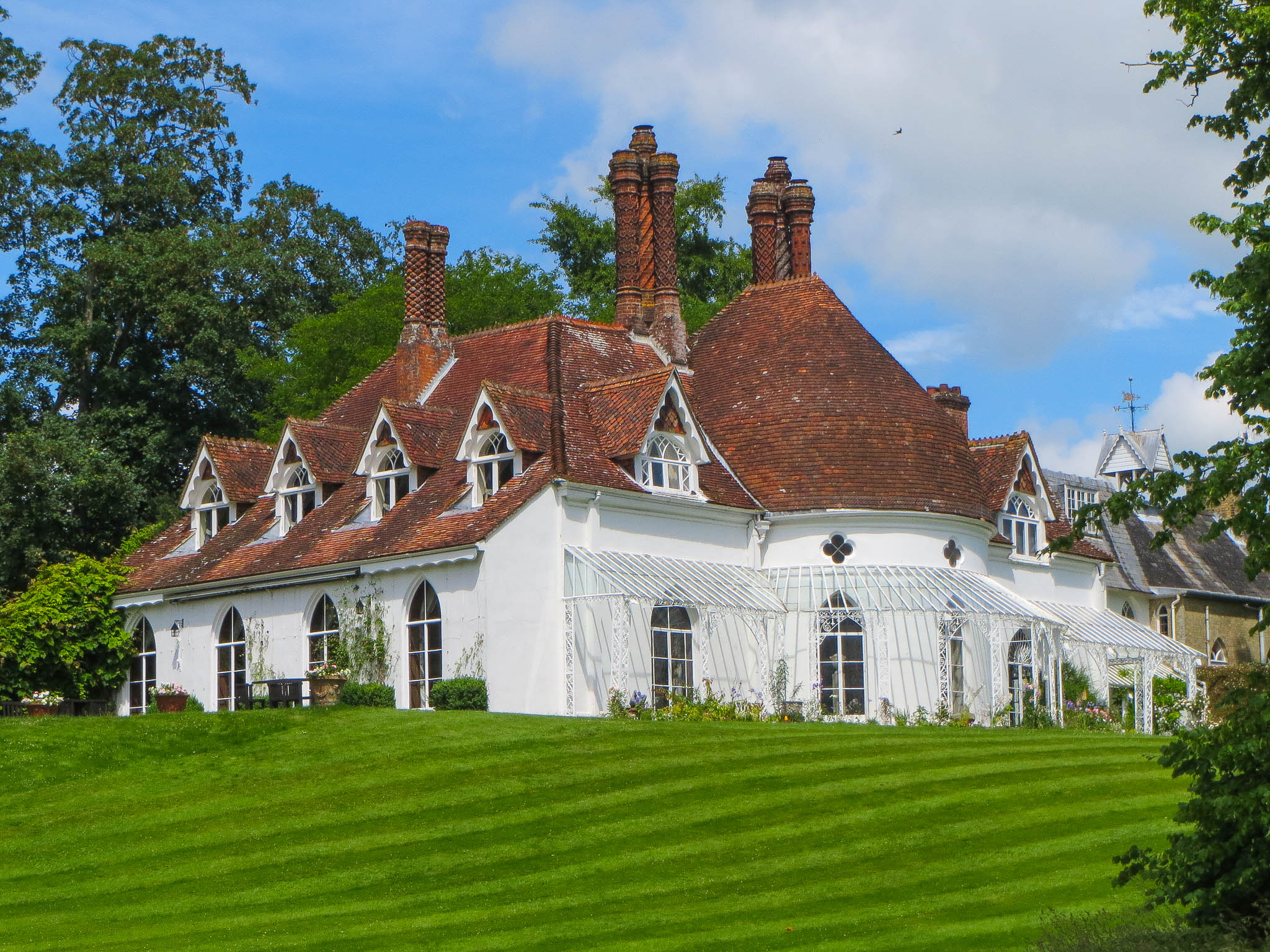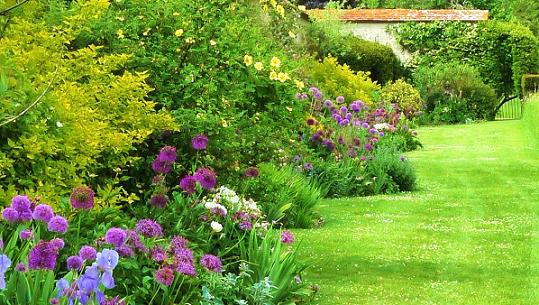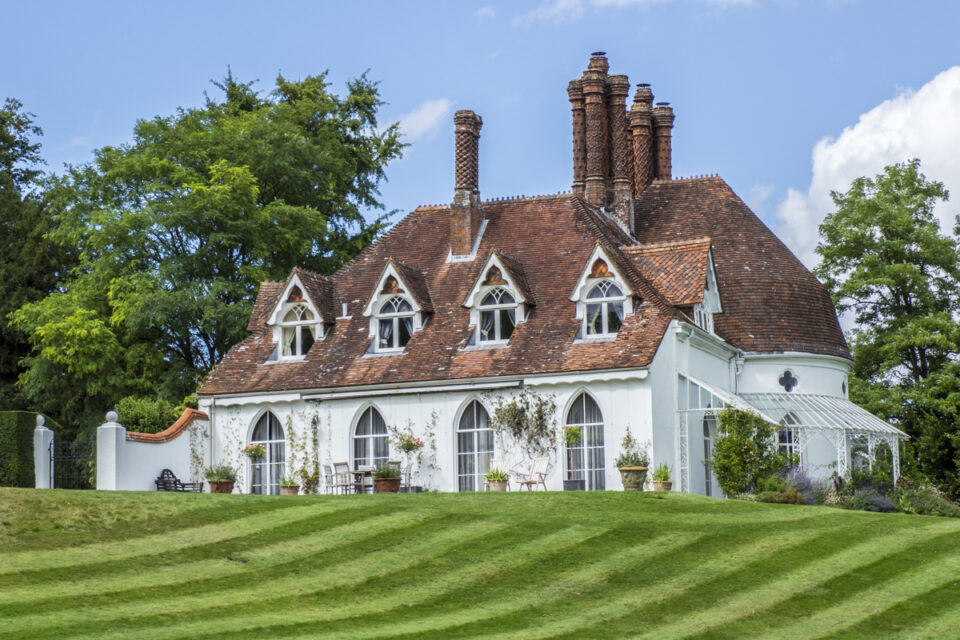The time I spent sitting on a tiny landing stage made of wood beside the River Test will always hold a special place in my heart. The twitch of a fly fisherman’s rod made its way to my ears. A swan glides gracefully in my direction as I observe. The beautiful Houghton Lodge, a cottage orné from the 18th century surrounded by gardens and parks, could be seen behind me, its striped lawns sweeping up to it.
You can’t go wrong with a day trip or overnight stay at this hidden treasure in Hampshire’s verdant Test Valley: Houghton Lodge.

History of Houghton Lodge
One of the finest examples of a cottage orné is Houghton Lodge. Towards the end of the eighteenth century and into the early nineteenth century, buildings in this style were widely built. Cottages with elaborate interiors were constructed in rural areas as status symbols. Originally, these were meant to be beautiful summer homes that would sit empty during the winter.
Some, however, developed into houses; their ornate interiors have led to the phrase “a gentleman’s residence in fancy dress” being used to describe them. Houghton Lodge is an older home with many of its original elements still in place. The Busks moved into the house, which was constructed in 1793, in 1910.
Tours of Houghton Lodge
Sophie and Daniel Busk are the fourth generation of their family to live in Houghton Lodge, and in keeping with tradition, they welcome guests to their home and gardens for a fee and on certain occasions throughout the year. Both Daniel and Sophie get a kick out of giving tours of the lodge and introducing guests to the lovely gardens.
Explore the elaborately decorated dining room, music room, and drawing room replete with family portraits, paintings, ornaments, and interesting artifacts unearthed on the property, and be prepared to be amused and educated along the way.

The Gardens at Houghton Lodge
The lodge is surrounded by several well-designed formal gardens, each of which features informative signs detailing local history, folklore, and customs.
A wall constructed of chalk cob from the 18th century surrounds the garden. Inside the wall, guests can take in the ever-changing displays of annuals, perennials, and shrubs. The gardens are well-known for their abundance of apple and pear trees. Against the wall is the longest espaliered pear tree in the world, according to the Guinness Book of World Records.
The lovely herbaceous border can be accessed by one of three wrought iron gates on the wall. This looks out over the overgrown section of the grounds that, when the cow parsley is in bloom, appears like a snowy field.
The Gardens at Houghton Lodge
Beautifully laid out and dotted with informational signs about local lore and rituals, formal gardens surround the lodge.
The wall surrounding the garden was built in the 18th century out of chalk cob. Seasonal flowers and bushes can be found inside the wall throughout the year. The gardens’ signature apple and pear trees thrive in this environment. There’s an espaliered pear tree up against the wall that’s the longest in the world, according to Guinness.
There are three wrought-iron gates in the wall that lead to the beautiful flowery border outside. This looks out over the overgrown section of the grounds, which appears like a snowy field when the cow parsley is in flower.

The new Oriental Garden is at the end of the flower bed edging and features a Torii, Moon Gate, and Nikko bridge, all staples of Japanese landscaping. A sculpture of a victorious goat stands on the bridge, while a sculpture of a despondent deer may be seen on the opposite bank of the stream that empties into the little lake.
The Jade Emperor was mulling about which twelve animals to include in the Chinese Zodiac when the Legend of the Goat and the Deer was written. Together, the deer and the goat walked down to the water’s edge. The deer dipped his hoof into the water and immediately ran for cover among the trees. The goat, however, merely leaped into the sea and swam to the island, therefore becoming an official member of the Chinese Zodiac.
The Peacock Garden is located beyond the herbaceous border. A giant peacock, perched on a plinth and surrounded by topiary, serves as the garden’s main point.

Beyond the manicured gardens, there is a larger park that can be explored by a well-marked path. The alpacas and black Hebridean sheep call this area home. Both alpacas and sheep are ruminants, and their ability to spit when they spot a predatory fox makes them a great pair. A nature pond can be seen nearby as well.
Before venturing over the expansive lawns to the River Test or along the Serpentine Walk through the wood in front of the lodge, guests can recharge at the Bloom Bloom Café in the walled garden.
The Bloom Bloom Café is located in a refurbished cow shed that was originally used to milk a prized herd of Guernsey cows. Coffee and homemade cake or a light lunch are available inside, or guests can choose to eat at an outdoor table with a view of the gardens. This tea room is linked to an orangery.
After failing as a hydroponic greenhouse, this space is currently being used as an extension of the tea room and is perfect for hosting informal gatherings, events, and even art exhibitions. The Apple Rooms at Houghton Lodge are another option for lodging.
Accommodation at Houghton Lodge Gardens
The six Apple Rooms at Houghton Lodge are individually designed studio apartments that are each named after a different variety of apple. Guests are welcome to wander the grounds whenever they choose throughout their stay.
Getting to Houghton Lodge and Gardens is easiest if you drive there. Parking is abundant and completely free. Traveling on the M3 and A30 from Central London will take roughly 1.5 hours. Stockbridge, the closest town, is only five minutes away and has clear directions to Houghton Lodge.
The closest train stations are in Winchester, 11 miles away, or Andover, 8 miles away; taxis are available at both.
The front gate is serviced by the local bus terminal. However, the frequency of this particular service (number 16) between Andover and Winchester is low.

